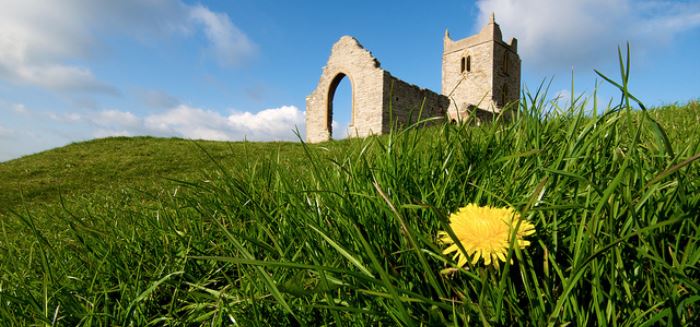In the heat of summer, as much as I’d like to pretend the leaves will never change, my A/C units will never go back to the basement, and my sandals will ever remain my go-to footwear, I have some sad news to share: fall is coming. For many congregations, fall is the time when they launch an annual time of intentional invitation to give to God’s work in their midst. As a professor I can tell you, those students who plan their papers early do the best. So, how might you begin now — yes, even this summer — to prepare for a fall campaign? Kathy Showalter Fiscus shares below a great list to get us going on the right track.
Yours truly,
Adam Copeland, Center for Stewardship Leaders
Time to Start Planning
Kathy Showalter Fiscus
Do you call it your pledge drive, ingathering of faith promises, the annual response program or just an obsolete practice? One author wrote, “The annual pledge drive is an admission of failure on the part of the church.” While Biblical teachings on financial stewardship have a year-round place in the life of a healthy congregation, the annual response program is critically important for the giver and the congregation, a vital practice related to growing spiritually mature disciples. Many congregations conduct their annual response program in the fall. If that is your tradition, now is a great time to begin planning to do it well.
The Bible contains thousands of verses about the intersection of our faith and our finances but we may have missed those lessons. I had to immerse myself in stewardship studies to grow spiritually. There are many wonderful, well-written stewardship resources with chapters on the annual response effort. Here are a few tips learned while using ideas from respected pastors and authors including Gary Langness, Charles Lane, Grace Duddy Pomroy, J. Clif Christopher, Mark Allen Powell, Henri Nouwen, and staff from ELCA churchwide offices.
Start planning early whether you have a standing stewardship team or you pull together an ad hoc group. Select clergy and lay leaders who understand the goal is not to raise money for the budget but to change hearts and lives. Think about your vision and mission. How you will invite givers to intentionally and systematically invest their resources — their energy, prayers and money — with you in God’s work?
Review past efforts both qualitatively and quantitatively. Count the giving households. How many make an annual commitment? What is the overall giving trend? What does the distribution of weekly gifts look like? How did previous efforts make people feel? Were they inspired by gratitude for God’s message of love? Did they learn more about how lives are being transformed through the church and its ministries?
Plan the details. Pick a theme, approach, and dates. My congregation intentionally moved our faith promise ingathering away from when we set the annual budget to reinforce this is not about paying the bills but about giving to God. The Revised Common Lectionary texts often contain Scriptures that talk about thanksgiving in October and November, or select your own and present a short series of sermons.
A variety of low-cost, themed resources exist. Check out the Center for Stewardship Leaders’ online database, Giving magazine from the Ecumenical Stewardship Center or contact your denomination for ideas.
Will you provide a graphic that shows how people currently give? Will you help them consider growing their giving in proportion to their income? Think about how you can use this time to strengthen relationships and involve others. Will worshippers offer temple talks, write commentary for the newsletter or send personal letters to others about why they give?
Implement the plan. Regardless of the method, remember to ask people to prayerfully increase their support for your ministries. Consider using the intention card to also ask for a commitment to grow in other ways in the coming year. Will they commit to attend worship regularly, volunteer with a ministry and participate in faith formation for personal growth and a shared life of faith?
Follow up and say thank you. Consider how to thank faithful givers. We print two different postcard messages and labels for all our giving households. The week after our ingathering, every giving household receives a postcard. If they submit a faith promise, it says thank you for your generosity. If they didn’t, it was a reminder that there is still time to commit.
The annual response program deserves our best work. Don’t be afraid to ask your community to invest in God’s work. It all belongs to God who is loving and generous with us.
More Information
Kathy Showalter Fiscus is the lay chair of the Faith and Finances Ministry team at Central Lutheran Church in Minneapolis, MN. She chairs the Minneapolis Area Synod’s (MAS) Stewardship Committee and is the MAS facilitator for the ELCA initiative, Ventures in Growing Stewards, and the First Call Pastors program.
Stewardship Speaker Series: Join us on campus this summer—July 21 and/or August 18—for breakfast as we hear from groundbreaking stewardship leaders practicing distinctive, top-notch stewardship. Come to one event, or both! All events are free and open to the public. For more information, and to register, visit www.luthersem.edu/stewlead.
Executive Certificate in Religious Fundraising: Luther Seminary, in partnership with the Lake Institute on Faith and Giving, is hosting a four-day intensive course, October 17-20, 2016. For more information visit:www.luthersem.edu/ECRF.

